Bicycles stand out as incredible tools for self-sufficiency. They offer a fantastic way to travel significant distances without relying on gasoline or electricity. However, to truly benefit from a bike’s self-reliant nature, understanding basic maintenance is crucial. While simpler than cars, bikes are still machines prone to breakdowns and in need of repair from time to time.
When my family and I got bikes to enjoy the local trails, I quickly realized a gap in my knowledge: bike maintenance. The thought of a flat tire and not knowing how to fix it was frustrating. That’s why I decided to learn basic bike repair, starting with the essential skill of patching an inner tube. It turns out, fixing a flat is much easier than I initially thought. Let’s dive into how you can fix your bike tire quickly and get back on the road.
Step 1: Getting the Wheel Off Your Bike
First things first, we need to remove the wheel with the flat tire. Flipping your bike upside down often makes this process easier. No need for fancy bike stands for this simple repair!
Modern bikes usually feature quick-release systems, making wheel removal straightforward. The main difference you’ll encounter is in disconnecting your brakes, which depends on your bike’s brake type. Here’s how to remove a wheel with v-brakes:
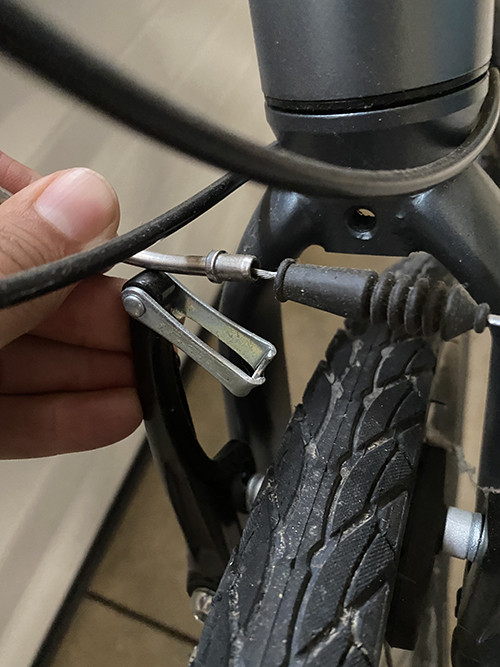 Disconnecting V-brakes for bike wheel removal
Disconnecting V-brakes for bike wheel removal
Disconnecting v-bbrakes is simple. Squeeze the brake arms together and unhook the cable cradle from the noodle (the curved metal piece with a rubber tip).
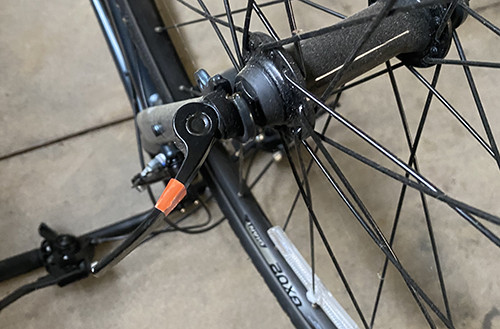 Opening the quick-release lever on a bike wheel
Opening the quick-release lever on a bike wheel
Open the quick-release lever. Then, loosen the nut on the opposite side by turning it counter-clockwise until you have enough space for the wheel to come out.
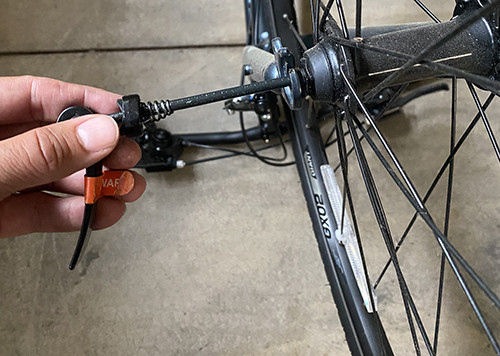 Unscrewing the quick-release mechanism on a bicycle
Unscrewing the quick-release mechanism on a bicycle
You can remove the entire quick-release skewer if you prefer, but it’s not necessary. Some find it easier to maneuver the wheel without the skewer in place, so I usually take it out.
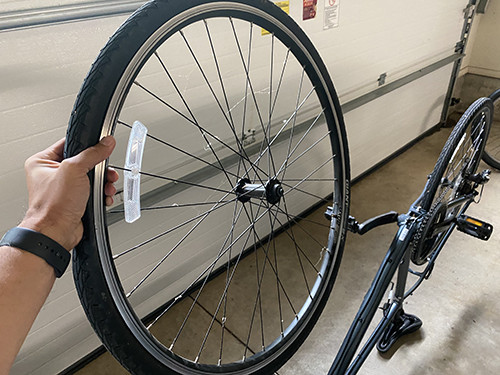 Bike wheel removed from the frame
Bike wheel removed from the frame
Wheel’s off! Now we can move on to the tire.
Step 2: Using Tire Levers to Remove the Tire
With the wheel removed, we need to separate the tire from the wheel rim to access the inner tube. Tire levers are essential tools for this step and make the job significantly easier. You can find tire levers at any bike shop or online – a small investment for hassle-free tire removal.
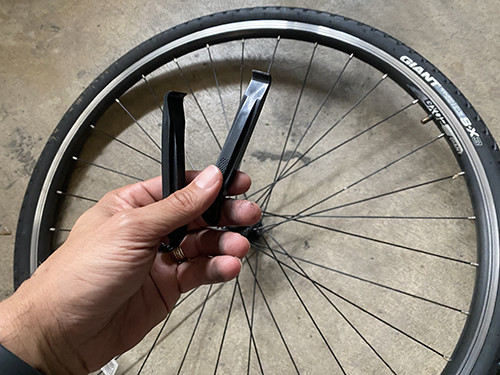 Essential tire levers for bicycle repair
Essential tire levers for bicycle repair
Insert your first tire lever between the tire and the wheel rim. The goal is to get the lever under the tire bead (the edge of the tire that sits in the rim) so you can pry it outwards.
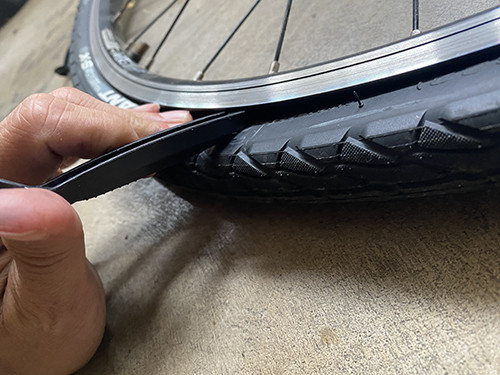 Using a tire lever to pry the tire bead off the rim
Using a tire lever to pry the tire bead off the rim
Once you’ve pried a section of the tire bead over the rim, hook the end of the tire lever onto a spoke. This keeps that section of the tire bead outside the rim, preventing it from slipping back in and making it easier to work on the rest of the tire.
 Hooking a tire lever onto a spoke to hold the tire bead off the rim
Hooking a tire lever onto a spoke to hold the tire bead off the rim
Insert a second tire lever a few inches away from the first one. Again, get it under the tire bead and pry outwards.
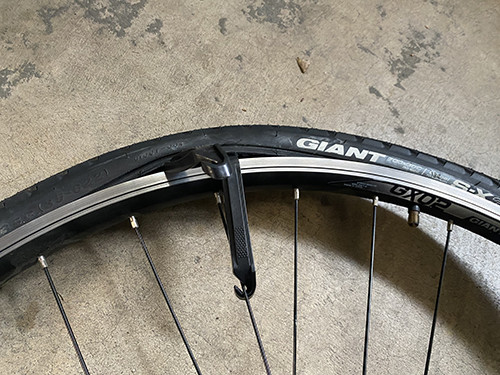 Using a second tire lever to further remove the tire
Using a second tire lever to further remove the tire
With the second lever in place, slide it around the wheel rim. This action will progressively pull the tire bead off the rim. It might feel stiff initially, but it becomes easier as you continue sliding the lever. You’ll see more and more of the tire bead coming off the rim.
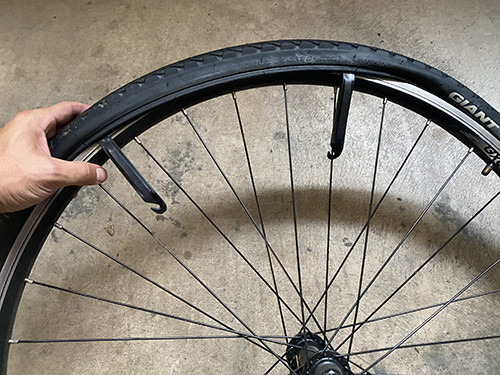 Sliding a tire lever around the rim to remove the tire
Sliding a tire lever around the rim to remove the tire
With one side of the tire completely off the rim, you can usually pull the rest of the tire off by hand.
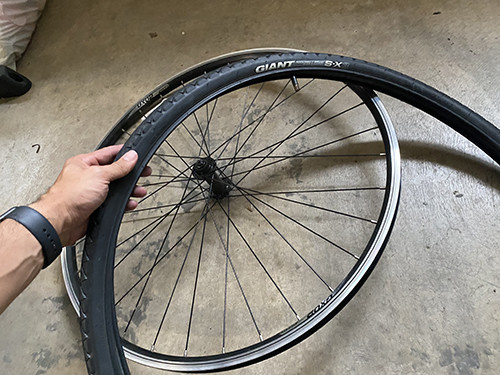 Bicycle tire partially removed from the wheel
Bicycle tire partially removed from the wheel
Tire removed! Now we can access the inner tube inside.
Step 3: Taking Out the Inner Tube
The inner tube sits inside the tire casing. Simply reach in and gently pull the inner tube out of the tire.
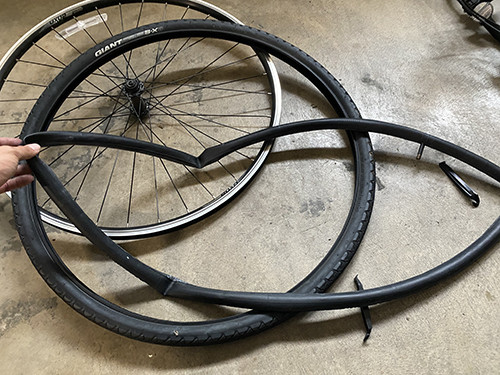 Removing the inner tube from the bicycle tire
Removing the inner tube from the bicycle tire
Step 4: Locating the Puncture
Now we need to find the hole in the inner tube. If you can’t immediately see it, slightly inflate the tube and listen for a hissing sound or feel for air escaping. You can also submerge sections of the inflated tube in water to watch for bubbles indicating the leak.
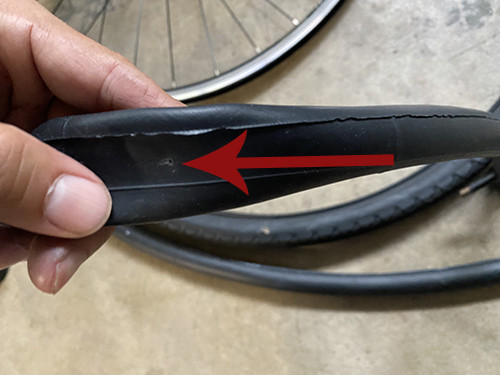 Finding the hole in the bike inner tube
Finding the hole in the bike inner tube
There it is – the culprit!
Step 5: Preparing the Inner Tube for Patching
Before applying the patch, we need to prepare the area around the hole for proper adhesion. Grab your patch kit.
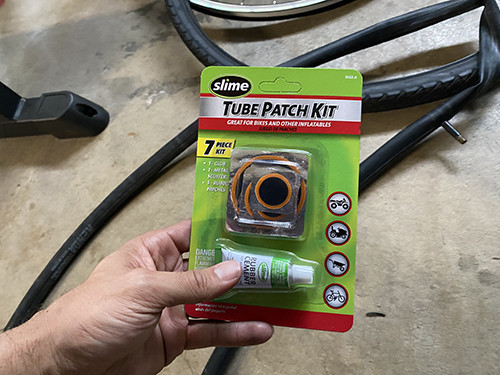 A bicycle tire patch kit
A bicycle tire patch kit
Most patch kits include a small metal scraper or a piece of sandpaper. Use this to lightly roughen the surface around the hole. This scuffing creates a better surface for the rubber cement and patch to bond to.
Step 6: Applying Rubber Cement
Open the rubber cement tube in your patch kit and apply a thin, even layer around the punctured area. Make sure the cemented area is slightly larger than the patch you’ll be using, about half an inch wider in all directions around the hole.
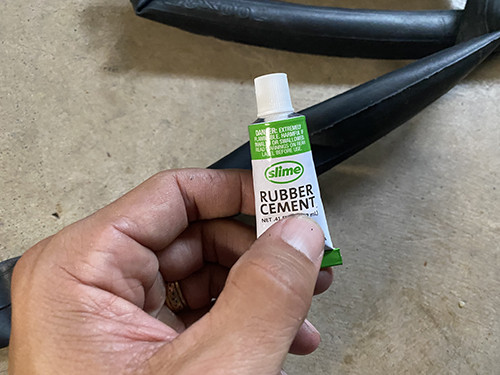 Applying rubber cement to the inner tube
Applying rubber cement to the inner tube
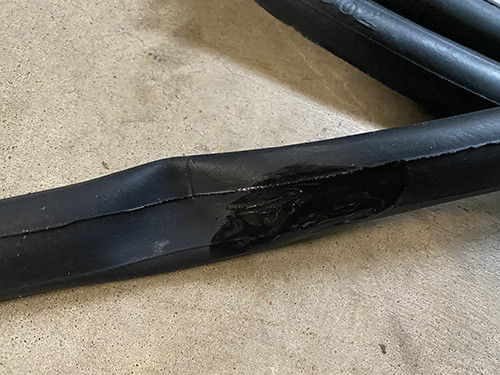 Spreading rubber cement evenly around the hole
Spreading rubber cement evenly around the hole
Let the rubber cement dry for a few minutes until it becomes tacky. This is crucial for a strong bond.
Step 7: Applying the Patch
Select a patch size that adequately covers the hole. For small punctures like this one, a small patch will work perfectly. Peel off the foil backing from the patch and firmly apply it over the rubber cement, directly centered on the hole.
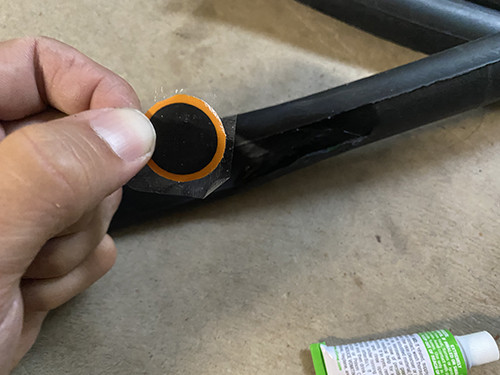 Applying a patch to the prepared inner tube
Applying a patch to the prepared inner tube
Once the patch is firmly in place, peel away the clear plastic film from the top of the patch. Press firmly around the edges of the patch to ensure it’s securely sealed. And just like that, the hole is patched!
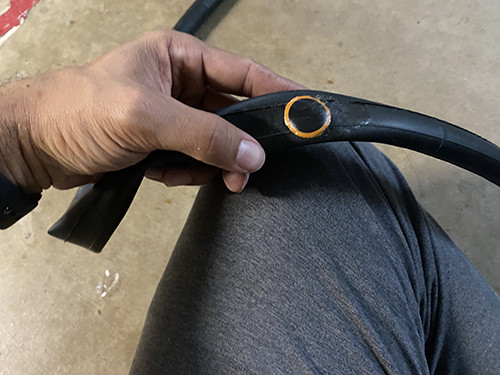 The patched inner tube, ready for reinstallation
The patched inner tube, ready for reinstallation
Step 8: Reassembling the Tire and Wheel
Now it’s time to put everything back together. First, carefully place the patched inner tube back inside the tire.
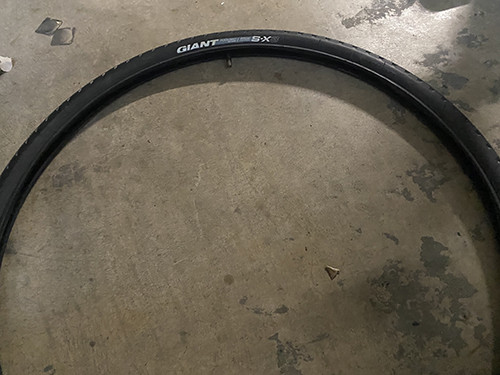 Putting the inner tube back inside the tire
Putting the inner tube back inside the tire
Next, remount the tire back onto the wheel rim. This can sometimes be a bit challenging, especially the last section of the tire bead. You might need to use your tire levers again to gently pry the final portion of the tire bead over the rim. Be extremely careful not to pinch the inner tube between the tire and the wheel rim during this step, as this can cause another puncture.
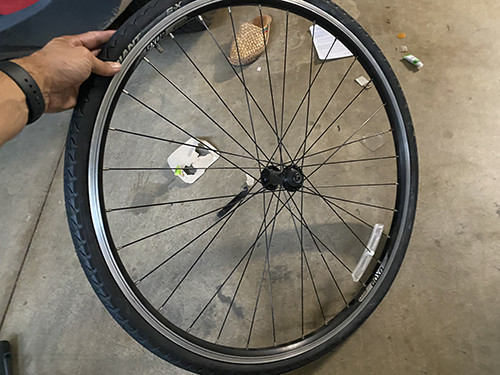 Putting the tire back onto the bicycle wheel
Putting the tire back onto the bicycle wheel
Once the tire is back on the wheel, inflate the inner tube to the recommended pressure (check the sidewall of your tire for the correct PSI). Finally, reinstall the wheel back onto your bike frame, reversing the removal process.
You can patch an inner tube multiple times. However, if you find yourself patching the same tube repeatedly (more than three times), it’s a good idea to replace it with a new inner tube. Excessive patches can sometimes lead to less reliable repairs.
With these simple steps, you’re now equipped to fix a bike tire yourself. Knowing how to fix a flat empowers you to handle minor bike issues and keeps you rolling on your cycling adventures!

